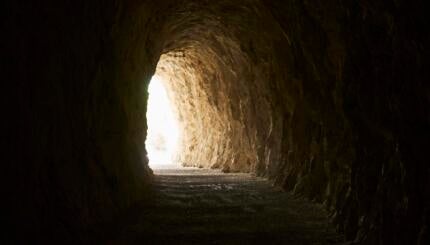It’s the great communal experience of the Jewish people. We fill halls and sanctuaries and homes in eager anticipation. Some came simply because they are Jews or married to Jews; this is what we do on the High Holidays. Some came for the camaraderie; it feels good to be with our people. Some came to be with family, some came to be with friends and communities, a touchstone of connection whether frequent or occasional. Some came to pour out their hearts in prayer, connect with traditions and values, and with the Holy One of Blessing.
Holy Days preparations were reflected in the Jewish and secular press; a lot of expectations and wishes were shared. There were many columns on what rabbis should or should not say on the holidays. Rabbis spent many weeks developing ideas, learning together and refining their craft of High Holiday sermons and prayer. If a complete outsider looked at the Jewish world they would perceive a fairly high level of anxious anticipation. Were we happy or were we worried?
Yes. We were both. But we were also in it together. Together, we laughed and cried and reflected and prayed—using the words of the machzor (holiday prayer book) or not. And we ate some great holiday food, the holidays nourishing our bodies as well as our souls, which, of course, go together! The great gathering connected us to something larger than ourselves.
Today, some of us will build our sukkot (sukkahs) for the upcoming holiday of Sukkot, five days after Yom Kippur, extending the season of joy, community and Jewish experiences. We may be exhausted, but we are riding the wave of spiritual high straight through to Simchat Torah, 12 days from now.
But most of us will settle back into our routines, perhaps relieved that it is over. The holidays were an island in our secular lives, though hopefully uplifting and meaningful. Whatever the takeaway from the High Holy Days, it gets tucked back into the box called “Jewish” or “religion” that we open only when needed.
Yet, the need for spiritual nourishment and the need to belong remain. The questions of the High Holy Days, “Who am I?, Where am I?” live in our souls all the time. How can these needs be met in meaningful, satisfying, accessible, accommodating ways?
This is a conversation worth continuing. There are lots of great answers to these questions, and now is the time to share them together. Jewish tradition is a path for meaningful spiritual living; a treasure that enriches those who hold it. If it’s out of reach, let’s get there together. This is the good stuff—the day after the holiday, when, filled with possibility, the reboot of our souls begins.
Like this post? Join the conversation through MyJewishLearning’s weekly blogs newsletter.



